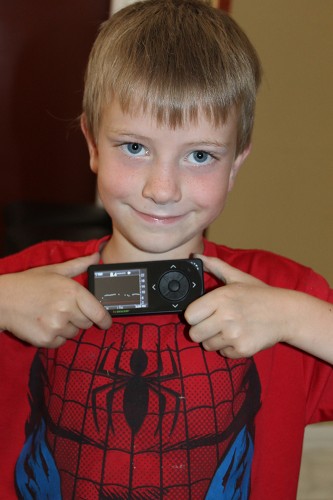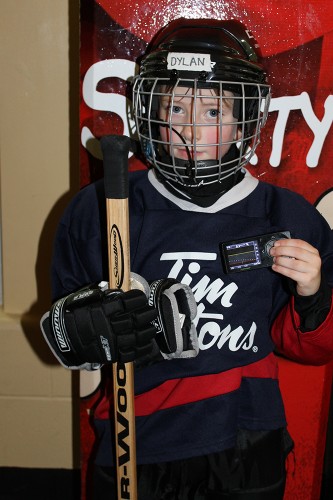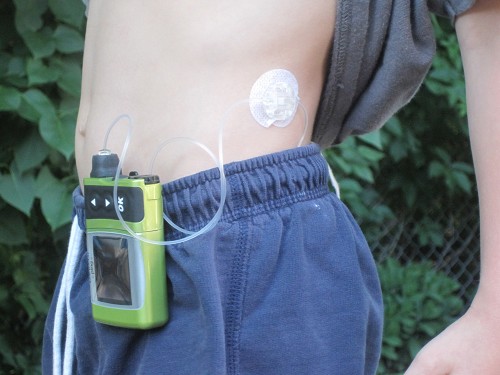In 2013, I had the pleasure of meeting and photographing a charming extended family on a farm just south of town. It was truly one of the warmest, most fun days of portraits and play in the five years I’ve been in business, and since that warm summer day on the farm, I’m happy to have become friends with them as well. Through Trudy and her family, I’ve learned a lot about Type 1 Diabetes, as their youngest son has T1D. Rarely do I open up the blog for guest posts, but I wanted to share my platform with Trudy today on World Diabetes Day, because I really had no idea how a family struggles with T1D, and I wanted to help raise awareness. I also hope that some future family facing the diagnosis and frantically skimming through search results finds this post and finds hope and optimism.
November is National Diabetes Awareness Month and November 14th is recognized as World Diabetes Day.
There are two stories I want to share and they seem to conflict. The first story is the one I tell my young son. People with Type 1 can do anything. The other story is about what happens behind the scenes when a person has Type 1 Diabetes. That story is reserved for adults (family and friends), policy makers, school personnel, babysitters, reviewers of insurance claims and processors of requests for disability tax credits.
Type 1 Diabetes (T1D) is an auto-immune disease – for some unknown reason your body destroys the insulin-producing (beta) cells in the pancreas. When you have diabetes, you no longer produce insulin so you have to inject insulin (exactly the right amount each time, based mostly on food and activity) with a syringe or pump infusion, for the rest of your life. Only 10% of people with diabetes have T1D. Most people, including myself and family members, knew little about T1D. We even missed the early symptoms which are warning signs. We are grateful for an informed daycare provider who shared her observations of extreme thirst and frequent urination. We know a lot more now!
Meet my son Dylan, now 7 years old. He was diagnosed at CHEO with Type 1 Diabetes at age two.

We remind Dylan and his friends there is nothing anyone can do to prevent T1D and nothing you can do to cure yourself from T1D. That’s the one line I hope you’ll remember. Individuals with T1D can accomplish anything and generally speaking, they can eat anything. Dylan is an active young boy and a terrific athlete: he is a skier, he plays hockey, he has won a golf championship and he spends the summer swimming, fishing and paddling with his dog Gracie. He dreams of playing in the NHL, just like Max Domi, who has T1D and started in the NHL this year with the Arizona Coyotes.

Behind the scenes is the second story, the one about the medical devices and decision making process that comes with management of a complex chronic condition. Some days our kitchen table looks like we’re analyzing air traffic control patterns. We download data from a continuous glucose monitor and insulin pump. These two devices, inserted beneath the skin and rotated to new locations every few days, do not speak to each other. People often believe a pump automatically gives you the insulin when you need it but that’s not how it works. It is based on careful review of logs and records ofr meals/activities/illness/unusual circumstances. You need lots of data to make good decisions. The past data informs future attempts to keep blood sugar in range. It fluctuates every hour around the clock. We are constantly monitoring and making adjustments daytime and nighttime. We calculate insulin to carbohydrate ratios and then figure how many carbohydrates are in an apple, a chocolate chip cookie, a bag of popcorn or mom’s homemade chicken soup with brown rice and quinoa. The number of carbohydrates and factoring in the planned activities is what primarily informs the dose of insulin. There are other variables such as hormones, stress, adrenaline, illness and even weather that mess with our data and make getting the right dose of insulin several times throughout the day and night a real guessing game. It’s hard work to be an artificial pancreas! Insulin will save your life but it can also cause death if overdosed. It requires constant vigilance and we are up several times each night to monitor blood sugar levels.

T1D is considered a disability in Ontario. I didn’t even know that for the first three years we managed our son’s disease! The Canada Revenue Agency explains the eligibility based on Type 1 Diabetes requiring more than 14 hours of Life Sustaining Therapy on the part person with Type 1 Diabetes (or a parent.) This will be for life.
How did I not know? Was I in denial? I was determined to make sure our lives would not change and focused on what was possible, which is everything. That’s still my starting position. Everything is possible with good communication and supports in place. The disability is invisible but requires careful management to keep him alive. In speaking with other parents, I came to understand the meaning of disability and the link to human rights and accommodation; perhaps a few extra minutes is required to take a blood sugar reading in the middle of a provincial school exam or being allowed to treat a low blood sugar by eating a snack that is kept in your emergency kit at your desk when it is not yet recess or lunch time.
Approximately 1 in 300 children have T1D and children under the age of five are the fastest growing segment. Because T1D is pretty rare, we often feel alone. Our school had no record of any previous student with T1D. It was all new. We connected with other families though social media. Children spend close to half of their waking hours at school, underscoring the importance of ensuring that students with T1D are safe and well-managed. Support for students with T1D remains inconsistent across Canada. There are discrepancies in resources and policies across the country, even among schools in the same jurisdiction. A huge advocacy effort is still needed to raise awareness and also to request funding for research.
Our family is well supported by family and friends and this makes a big difference. We are grateful that everything seems possible. We try to lighten the load for others who are on the same path. We participate each year in the JDRF Telus Walk to Cure Diabetes, volunteer with JDRF, meet with policy makers and influencers. With other parents, I helped to create www.sosdiabetes.ca

Insulin was discovered by Canadians in 1921. We’re hopeful a cure for diabetes will be discovered by 2021!
Until then, T1D looks like Dylan! Remember both stories. The visible face of T1D and believing that anything is possible and the behind the scene efforts required to manage this disease.

Thank you for sharing this with us Trudy. very informative post! I admire your positive attitude and I know, from experience, what a huge difference that makes! so glad Dylan has such a great team 🙂